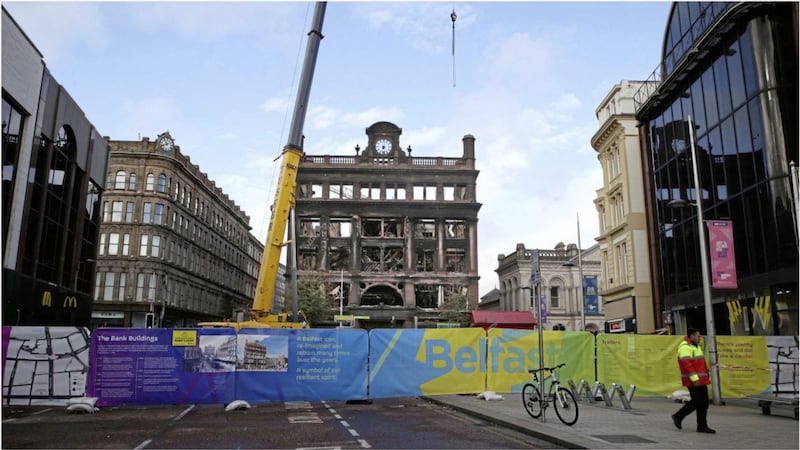THE top floors of the fire-damaged Primark building could be taken down and rebuilt using the original stonework, new plans show.
The details are included in an application filed by the retailer which will be considered by Belfast City Council’s planning committee this month.
It has been more than a month since the historic Bank Buildings was destroyed in a blaze, which has caused significant disruption in the city centre.
A large cordon erected round the charred shell of the store is expected to remain in place for months amid uncertainty over whether it, or parts of it, can be saved.
Several businesses within the safety zone have been forced to shut, while others have seen footfall badly affected by the cordon that blocks off several central thoroughfares.
The plans to maintain a cordon around the building for at least four months have been branded “excessive” by architecture experts.
Read More:
- Businesses 'worst affected' by Belfast Primark fire to receive funding up to £19,000
- Council footing bill for maintaining security cordon following Primark fire
- Primark donates £500,000 to Belfast traders affected by fire
The Royal Society of Ulster Architects said it could see “no reason why the facade of the building cannot be externally supported and a reduced cordon put in place”.
The cordon has led to 14 businesses being closed. Now, a planning application states that the structural damage caused by the fire has been severe with the loss of a significant portion of internal parts of the building.
The area most badly affected, it says, are the original timber floors and steel beam construction, which have been destroyed.
The building’s external structure is still standing, however, and the application added that it had shown “resilience through recent high winds and storm conditions”.
The demolition plan would involve removing any precarious structural elements, which include the chimney stacks.
It would also involve reducing the height of the front section of Bank Buildings down to the fourth floor. Then, all stonework would be individually marked before being dismantled and labelled.
This would allow it to be reinstated when the rest of the structural work was finished.
There was an opportunity to “restore and re-construct the building with a minimal loss of historic fabric as is practically possible to retain historic authenticity”, the application added.
The building’s famous clock face would also be removed for repair before being and reinstated later.
A plaster cast copy of decorative elements like cornices and urns would also be made to allow rebuilding a replica of any damaged sections.








